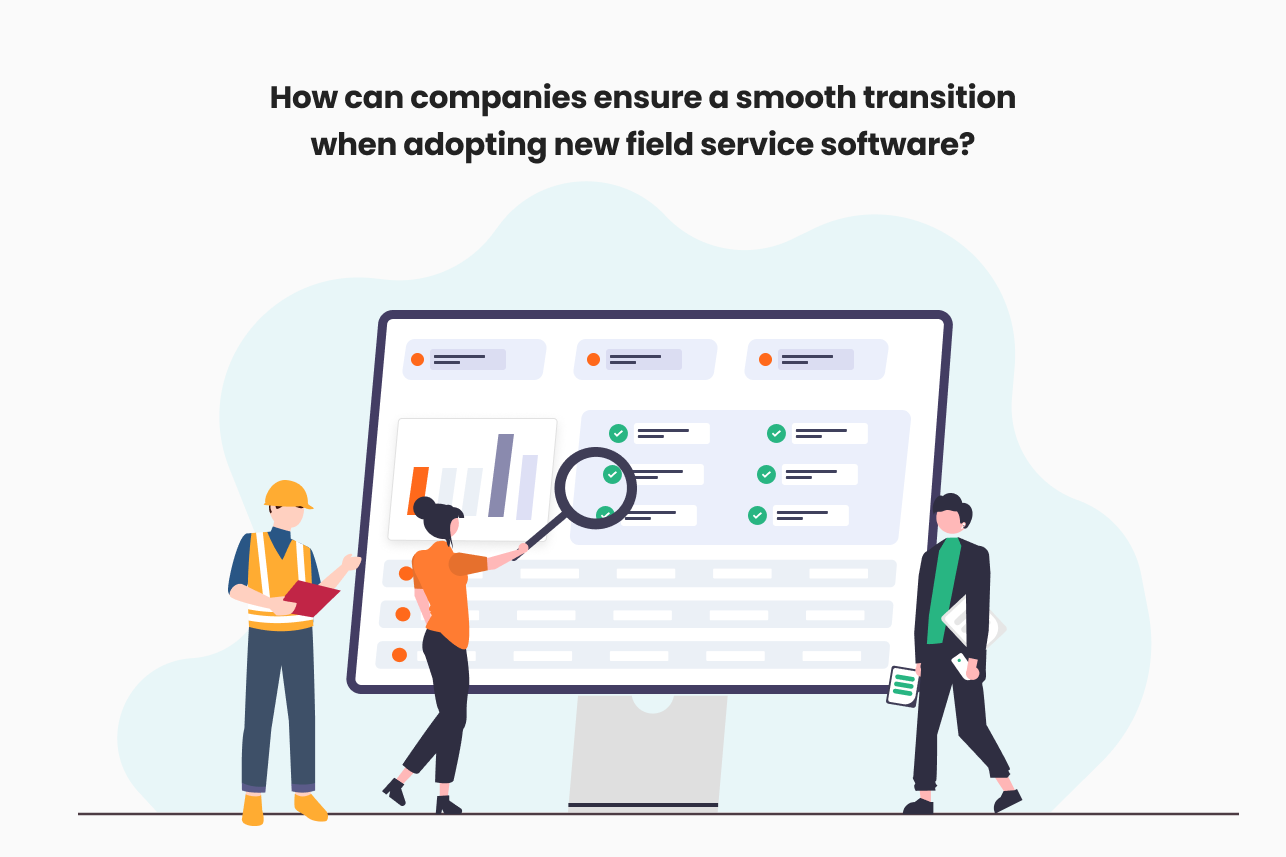Transitioning to new field service software can significantly enhance operational efficiency, customer satisfaction, and overall productivity. However, without proper planning and execution, it can also lead to disruptions and resistance from employees. Here’s how companies can ensure a smooth transition when adopting new field service software.
- Conduct Thorough Needs Assessment
Before selecting new field service software, conduct a comprehensive needs assessment. Identify the specific challenges your team faces and the features they require. This ensures you choose software that aligns with your business goals and addresses your operational pain points. Engaging stakeholders from different departments during this phase can provide valuable insights and foster buy-in from the outset. - Select the Right Software
Choosing the right software is crucial. Evaluate multiple options based on scalability, ease of use, integration capabilities, and customer support. Opt for a solution that offers flexibility and can grow with your business. Reading reviews, requesting demos, and consulting with industry peers can help in making an informed decision. - Plan the Implementation Process
A detailed implementation plan is essential for a smooth transition. Define clear objectives, timelines, and milestones. Assign a dedicated project manager to oversee the implementation process and ensure accountability. This plan should include stages like data migration, system integration, testing, and employee training. - Communicate with Your Team
Effective communication is key to minimizing resistance and confusion. Clearly explain the reasons for the transition, the benefits of the new software, and how it will impact daily operations. Regular updates on the implementation progress can keep everyone informed and engaged. Encouraging feedback and addressing concerns promptly can also help in smoothing the transition. - Provide Comprehensive Training
Adequate training ensures that employees feel confident using the new software. Organize training sessions tailored to different user groups, such as technicians, dispatchers, and managers. Offer hands-on training, tutorials, and access to a knowledge base for continuous learning. Providing support during the initial phase can help in addressing any challenges users might face. - Migrate Data Carefully
Data migration is a critical step that needs careful attention. Ensure that all necessary data is accurately transferred from the old system to the new one. This might involve cleaning and organizing data to avoid inconsistencies. Conducting a thorough audit post-migration can help in verifying the accuracy and completeness of the data. - Test the System Thoroughly
Before going live, conduct extensive testing of the new software. This includes testing all functionalities, integrations, and workflows to ensure everything works as expected. Involving end-users in the testing phase can provide practical insights and help in identifying any potential issues that might have been overlooked. - Monitor and Support Post-Implementation
The transition doesn’t end with the implementation. Continuous monitoring and support are crucial to address any post-implementation issues. Set up a helpdesk or a dedicated support team to assist users with troubleshooting and optimizing their use of the software. Gathering feedback regularly can help in making necessary adjustments and improvements. - Encourage Continuous Improvement
Adopting new field service software should be seen as an ongoing process rather than a one-time project. Encourage a culture of continuous improvement where feedback is actively sought and acted upon. Regularly review the software’s performance and its impact on operations to identify areas for enhancement. - Leverage Analytics for Optimization
Most modern field service software comes with robust analytics capabilities. Leverage these tools to gain insights into your operations and identify trends, inefficiencies, and opportunities for improvement. Using data-driven decisions can significantly enhance the value derived from the new software.
Conclusion
Adopting new field service software can transform your business operations, leading to increased efficiency and customer satisfaction. However, a smooth transition requires careful planning, effective communication, and ongoing support. By conducting a thorough needs assessment, selecting the right software, providing comprehensive training, and fostering a culture of continuous improvement, companies can ensure a successful transition that maximizes the benefits of the new system.
